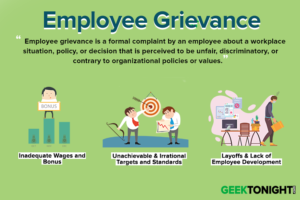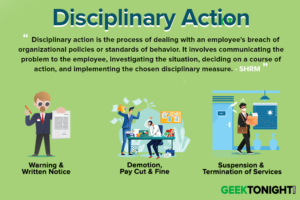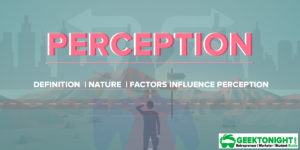Scholars and researchers have undertaken extensive studies on the subject of organizational culture. On the basis of these studies, they have come up with different organizational models. Organizations use these models to evaluate their culture in order to find any negative elements in them so that they can be corrected or eliminated.
Table of Content
Organizational Culture Models
Let us discuss the four most important organisational culture models in the following sections.
- Schein’s Model of Organisational Culture
- Hofstede Model of Organisational Culture
- Denison Model of Organisational Culture
Schein’s Model of Organisational Culture
Edgar H. Schein, born in 1928, was a professor at the MIT Sloan School of Management. He is known for his books and articles on organizational culture. Schein developed a model to explain the basic elements of culture. The model can be used to study different kinds of cultures found in the corporate world. His model closely resembles other functionalistic models established by cultural theorists like Geert Hofstede and Fons Trompenaars, which we will be discussed subsequently in this chapter.
Schein developed the cultural model to increase cultural visibility in an organization. According to him, there are mainly three levels of organizational culture.
The various elements of Schein’s cultural model are explained in detail as follows:
Artifacts
These are the visible elements in an organizational culture that can be easily observed by outsiders. Artifacts comprise the logos of an organization, its architecture, the dress code and behavior of employees, the myths and stories about the organization, and so on.
However, it may be difficult for them to assess the reason for the existence of artifacts. This is because symbols and the outward appearance of an organization can be misleading.
For example, if an outsider observes that the interaction among employees is formal and casual, he may take this to mean that the organization is inefficient. His observation could be based on his/her own assumption that informality means being casual and not working.
Thus, one cannot deduce the underlying values of an organization’s culture by observing the artifacts alone.
Espoused Values
These are the values adopted by employees from top-level executives or the founders of the organization. However, the values displayed by the leaders should be supported by some general and shared assumptions about how an organization should be run or its employees should be managed, etc. For example, in the event of a sales decline, a sales manager may ask his/her subordinates to increase the advertising of products. This means that the manager believes that an increase in advertising would raise sales.
The subordinates working under the sales manager would follow his/her beliefs. Thus, the decisions taken by managers are taken as value-based resolutions and are followed. However, there can be problems when espoused values are not in line with the basic assumptions of the culture of an organization.
Basic Underlying Assumptions
Assumptions are deeply embedded in organizational culture and are difficult to decipher. They reflect the basic values shared within the specific organizational culture. For example, in the field of engineering, it is assumed that items created by engineers must be safe to use. It is completely inconceivable that engineers can create an unsafe item. Thus, basic assumptions are difficult to change as they are expected to be followed eternally.
By using Schein’s cultural model, leaders, and senior executives would be able to comprehend cultural elements in a better way and figure out the relationship between deep-rooted assumptions and common business practices within an organization.
Leaders can improve their productivity and effectiveness of the organization by making changes in the basic assumptions that have become old and outdated due to changing times. Competition in the market, new regulations, government policies, or any other factor in the external environment can force leaders to make changes in organizational culture in order to survive and evolve.
Thus, cultural change processes can be initiated where basic assumptions are altered to fit the desired values and artifacts of an organization.
Hofstede Model of Organisational Culture
Geert Hofstede was a Dutch management researcher. He developed the cultural model as a result of research performed by him for a decade in 40 countries. In Hofstede’s model, there are five dimensions of corporate culture as shown in the Figure:
Power Distance
It refers to the degree of inequality that exists in a particular country and is accepted by its people. In organizations where power distance is high, unequal distribution of power is accepted by the people. For example, Malaysian organizations score high on power distance.
In these organizations, centralized structures are followed where reporting is made directly to the top management. On the other hand, in organizations having low power distance, power is shared among people. In such organizations, employees treat themselves as a part of a team. For example, in countries with low power distance, such as Australia, organizations are characterized by decentralized structures and close teamwork.
Individualism/Collectivism
Individualism refers to the tendency of individuals to give high importance to personal achievement. In individualistic societies such as the US and Germany, people do not form relations with anyone outside their organizations, and they perform only for individual achievement.
On the other hand, collectivism refers to the tendency of people to treat themselves as a part of a group. Organizations promoting a collectivist culture empower employees to make decisions. Such organizations are common in countries like Panama and Guatemala.
Masculinity/Femininity
According to this dimension, there is a division of roles between genders in society. In masculine societies, values like achievement, power, and materialism are given priority. For example, in Japanese organizations, masculine culture is followed.
On the other hand, in feminine societies, values such as compromise, life quality, and friendship have more importance. For example, organizations in Sweden follow a feminine culture.
Uncertainty Avoidance
Uncertainty avoidance depicts the degree of tolerance towards uncertainty and ambiguity in a society. In a country like Germany, which scores high on uncertainty avoidance, employees like to be safe and take various measures to avoid risks in organizations.
Moreover, employees prefer to be governed by rules and regulations. On the other hand, in societies with low uncertainty, people willingly deal with changes and challenges. These societies are often governed by fewer rules. For example, in Denmark, organizations follow a low-certainty culture.
Long-term Orientation
This refers to the extent to which people are willing to value long-term traditions. In countries where long-term orientation is high, people adopt those practices and values that are expected to prevail in the future too.
On the other hand, in countries with a low long-term orientation, people like to adhere to those traditions that have been followed in the past and are practiced in the present as well. Long-term orientation is high in Japanese organizations, while African organizations have low long-term orientation.
Denison Model of Organisational Culture
Daniel R. Denison, a professor at IMD business school, Switzerland, and founding director at Denison consulting had a special interest in the field of organizational culture and leadership, and the impact they have on the productivity and effectiveness of organizations. Denison’s model of organizational culture is widely known and used by many organizations for assessing their culture, effectiveness, and performance.
In Figure, Denison’s model of organizational culture emphasizes four key traits that an organization should possess in order to be effective. Each trait is further broken down into three specific indices.
The traits and the respective indices are explained as follows:
Consistency
It involves defining values and systems that help in the formation of an organization’s culture. Through consistency, an organization can integrate and coordinate different elements to create an internal system of governance based on mutual consensus. Consistency is further divided into the following elements:
- Core Values: Organizations with stable growth rates have a clear set of defined core values that help both the employees and leaders to make consistent decisions and behave in a consistent manner.
- Agreement: People can agree with each other by communicating and engaging in dialogue and getting multiple perspectives on the table whenever they are faced with any difficult issue or situation.
- Coordination and Integration: Employees need to ensure that their activities and work are coordinated and integrated. This helps employees in understanding their work and its effect on the activities of others.
Mission
It comprises the vision, goals, objectives, and strategy of the organization. Large and successful organizations have a mission that explains the reason for their existence to employees, and how the employees contribute to the attainment of organizational goals.
The following are the main components of the mission:
- Strategic direction and intent: It refers to the strategies developed in order to operationalize the vision of an organization.
- Goals and objectives: They are the short-term goals established by leaders to encourage employees to connect with the vision and strategy of the organization.
- Vision: Vision defines the ultimate goals an organization desires to achieve in the long run.
Involvement
Employees enjoy a sense of ownership, and responsibility and feel empowered in organizations that involve their employees in making business strategies and taking crucial decisions. This increases the commitment of the employees to the organization and increased the capacity for autonomy.
The main component of involvement are:
- Empowerment: The organization needs to be clear on the areas where it can get employees involved and have their input. This helps in creating informed empowerment.
- Team orientation: Organisations need to encourage teamwork so that creative ideas can be shared and employees work in coordination with each other to accomplish shared goals.
- Capability development: It involves developing employees’ skills and knowledge through formal training, coaching, and mentoring. Further, employees can be given new and different roles and responsibilities.
Adaptability
It involves adapting to the changes in the business environment. Organizations with high productivity and performance levels are able to adapt to changes in the environment and customer needs.
The following are the elements of adaptability:
- Creating change: Organisations should be open to new ideas and show a willingness to change their existing management practices in order to do new things.
- Customer focus: Employees should be customer oriented and look for new ways and methods to meet customer expectations.
- Organizational learning: The concept of organizational learning implies that members of an organization can gain knowledge from successes and failures. The reaction to failure is helpful in identifying areas of improvement.
u_accordion]
[/su_accordion]Human Resources Tutorial
(Click on Topic to Read)






